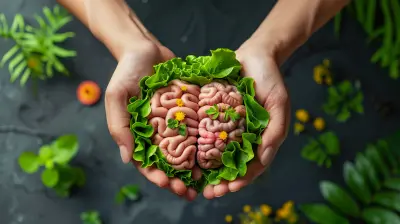Understanding Hormonal Changes at Every Stage of a Woman's Life
19 June 2025
Hormones—those tiny chemical messengers—play a massive role in a woman's body. They control everything from mood swings to metabolism, sleep cycles, fertility, and even skin health. But here's the thing: they don’t stay the same. Hormonal changes are a natural part of life, shifting with age and different life stages.
Understanding these changes can help you navigate them better, knowing what’s “normal” and what might need medical attention. So, let’s break it down stage by stage and uncover how hormones impact a woman's body through the years. 
Childhood and Puberty: The Beginning of Hormonal Awakening
Before puberty, a girl's hormones are relatively stable. But as she approaches adolescence, the real action begins.The Role of Estrogen and Progesterone
The hypothalamus (a tiny region in the brain) sends signals to the pituitary gland, which then tells the ovaries to start producing estrogen and progesterone. These two hormones are the masterminds behind puberty.What Happens During Puberty?
- Breast development typically begins between ages 8-13.
- The first menstrual period (menarche) usually happens around 12-14 years old.
- Growth spurts occur, leading to changes in body shape.
- There’s an increase in body hair and sometimes acne due to fluctuating hormones.
Common Challenges:
- Irregular periods – It’s normal for cycles to be unpredictable in the first few years.
- Mood swings – Thanks (or no thanks) to hormones adjusting, mood changes are common.
- Acne – Rising androgen levels can cause increased oil production, leading to breakouts.
During this stage, patience and a healthy lifestyle can help smooth the transition. 
Reproductive Years: The Cycle of Fertility
Once puberty settles, women enter their prime reproductive years. This phase, typically from the late teens to early 40s, is marked by regular menstrual cycles and fluctuating hormone levels each month.The Menstrual Cycle and Hormonal Fluctuations
A woman’s cycle is about 28 days long (give or take a few days). Here’s a quick breakdown of the hormonal shifts:- Follicular Phase (Days 1-14): Estrogen rises, triggering egg development.
- Ovulation (Around Day 14): A surge in luteinizing hormone (LH) releases the egg.
- Luteal Phase (Days 15-28): Progesterone increases to prepare for pregnancy. If fertilization doesn’t happen, hormone levels drop, leading to menstruation.
Hormonal Imbalances and Their Effects
While cycles are natural, some women experience imbalances that cause:- Irregular periods
- Severe PMS (premenstrual syndrome)
- Polycystic ovary syndrome (PCOS) – a condition where hormone imbalances lead to irregular cycles, excess androgens, and ovarian cysts
- Thyroid issues – The thyroid plays a crucial role in metabolism and can affect periods
The Role of Hormones in Pregnancy
If a woman becomes pregnant, estrogen and progesterone skyrocket to support the baby. These hormonal shifts can cause morning sickness, mood swings, and fatigue. After childbirth, a sharp drop in hormones may trigger postpartum depression in some women.Taking care of hormone health during this phase includes eating a balanced diet, managing stress, and staying physically active. 
Perimenopause: The Transition Phase
Perimenopause is the bridge between the reproductive years and menopause. It can start as early as the late 30s or as late as the 50s, lasting anywhere from a few months to 10 years.What Hormonal Changes Occur?
- Estrogen levels start fluctuating rather than maintaining a steady rhythm.- Ovulation becomes less predictable, leading to irregular periods.
- Progesterone production declines, impacting mood and sleep.
Common Symptoms
- Hot flashes and night sweats – A sudden wave of heat, often accompanied by sweating- Mood swings and anxiety – Hormonal dips can make emotions unpredictable
- Sleep disturbances – Lower progesterone can lead to insomnia
- Weight gain and slowed metabolism – Estrogen influences fat storage, and its decline may cause weight to increase
- Memory issues/brain fog – Many women describe forgetfulness during this time
How to Manage Perimenopausal Symptoms
- Eating a diet rich in phytoestrogens (foods like soy, flaxseeds, and legumes) may help- Regular exercise reduces stress and manages weight
- Meditation and relaxation techniques can help regulate mood swings
- Some women consider hormone replacement therapy (HRT) under medical guidance
This is a period of adjustment, but lifestyle changes can ease the transition. 
Menopause: A New Chapter
Menopause officially begins when periods have been absent for 12 consecutive months, typically around the age of 50-52.What Happens in the Body?
- Estrogen and progesterone levels drop significantly- Periods stop completely
- Fertility comes to an end
Common Symptoms of Menopause
- Hot flashes and chills- Vaginal dryness and discomfort
- Bone density loss (osteoporosis)
- Lower libido
- Skin aging and hair thinning
Since estrogen plays a role in heart health and bone strength, postmenopausal women are at a higher risk for osteoporosis and cardiovascular diseases.
How to Stay Healthy Through Menopause
- Calcium and vitamin D intake is crucial for bone health- Strength training helps maintain muscle and bone density
- Hydration and good skincare can help combat skin dryness
- Healthy fats (like those from avocados, nuts, and olive oil) support hormone balance
- Consulting a doctor about HRT or natural remedies, such as black cohosh and evening primrose oil, can help manage symptoms
Menopause isn't the end—it's simply a new phase with its own rhythm.
Postmenopause: Life After Menopause
After menopause, hormone levels remain low but stable. While symptoms like hot flashes may lessen, estrogen’s decline continues to impact the body.Long-Term Health Considerations
- Increased risk of osteoporosis – Bone loss accelerates, making fractures more likely- Higher risk of heart disease – Estrogen once provided protective benefits, but without it, cardiovascular issues can arise
- Urinary incontinence – Weakened pelvic muscles can lead to bladder control problems
Healthy Aging Strategies
- Weight-bearing exercises like walking and light weightlifting keep bones strong- Regular health check-ups help monitor heart health and osteoporosis risk
- Eating nutrient-dense foods supports longevity and well-being
- Maintaining strong social connections and staying mentally active can improve overall quality of life
This phase is a time to embrace self-care and prioritize health in new ways.
Final Thoughts
Hormonal changes are a lifelong journey for every woman. From puberty to postmenopause, hormones shape physical health, mental well-being, and overall quality of life. Understanding these shifts allows women to proactively manage their health and embrace each stage with confidence.If you ever feel overwhelmed by the changes, remember—you're not alone. A supportive lifestyle, good nutrition, and medical guidance when needed can make all the difference.
all images in this post were generated using AI tools
Category:
Womens HealthAuthor:

Jackson Mahoney
Discussion
rate this article
2 comments
Lorelei Gomez
This article beautifully highlights the complexities of hormonal changes. Understanding these stages is vital for women's health. Thank you for shedding light on such an important topic!
June 21, 2025 at 2:49 PM

Jackson Mahoney
Thank you for your kind words! I'm glad you found the article helpful in highlighting this important topic.
Monica Patterson
Thank you for shedding light on such an important topic. Understanding hormonal changes is essential for women at every stage of life. Your insights are incredibly helpful and provide a great foundation for navigating these natural transitions with awareness and care.
June 20, 2025 at 10:45 PM

Jackson Mahoney
Thank you for your kind words! I'm glad you found the insights helpful in navigating these important changes.


